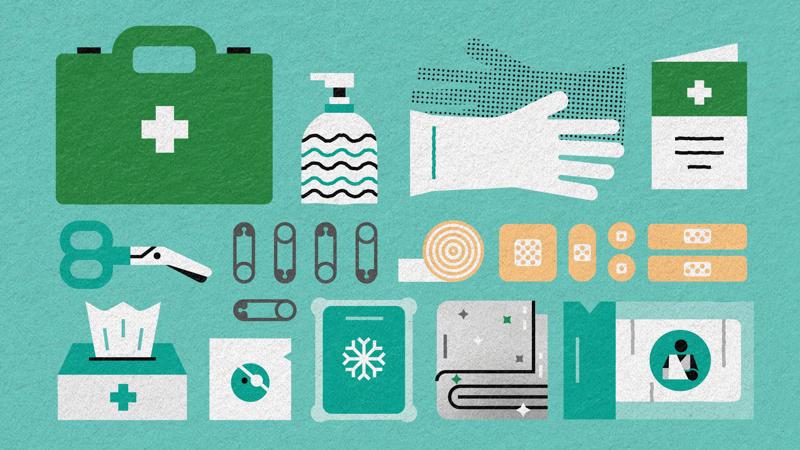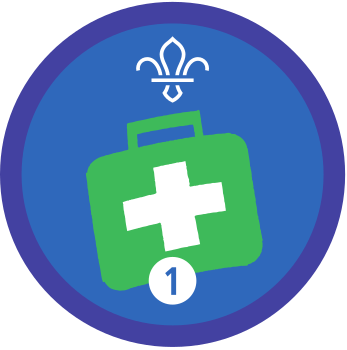
Be an emergency aider: heart attacks and strokes
You’ll need
- Chairs
- Big pieces of paper
- Pens or pencils
- Sticky tack
Before you begin
- Make sure the person leading the activity knows about first aid. Someone from your group or local area with a first aid certificate could take charge, or you could reach out to places that help provide first aid training or support, for example, St John Ambulance or the British Red Cross.
- You’ll need enough leaders for the activity, including enough people who are happy to demonstrate first aid techniques.
- Adults should only demonstrate and practise first aid on other adults; young people should only demonstrate and practise first aid on other young people. Adults and young people should never demonstrate or practise first aid on each other.
- Remember that this activity touches on topics that might be sensitive for some people. Give everyone the opportunity to step away if they need to compose themselves.
This could be for a number of reasons including things that people may have experienced. Make sure they have a space to go to or someone to talk to if they need it. If needed, have a look at our information on bereavement.
- Write the word ‘FAST’ down the left edge of the A3 paper and stick it up somewhere everyone will be able to see it.
- Set up the chairs in a semi-circle facing the person leading the activity and ask everyone to sit down
Learn what to do for a heart attack
- Have a quick chat to see what everyone knows about heart attacks including why they happen and any signs or symptoms.
- Explain what heart attacks are and the signs and symptoms people can look out for.
You can find more information about heart attacks on the St John Ambulance website, or below.
- Show everyone how to treat someone with a suspected heart attack, using another adult as the casualty. Explain what you’re doing every step of the way.
- Everyone should get into pairs of young people. They should take it in turns to practise treating each other for a suspected heart attack. Make sure some adults walk around so they can help if anyone’s finding it tricky.
Learn what to do for a stroke
- Everyone should take it in turns to share what they know about strokes, including why they happen and any signs or symptoms.
- Explain what strokes and the signs and symptoms people can look out for. As you explain each symptom, write face, arms, speech, and time on the piece of A3 paper you wrote FAST on earlier.
You can find more information about strokes on the St John Ambulance website, or below.
- Show everyone how to treat someone with a suspected stroke, using another adult as the casualty, and include how to do the FAST checks and explain what you’re doing every step of the way.
A heart attack happens when the supply of blood to part of the heart is blocked. It’s usually blocked by a blood clot. For detailed and up-to-date information, check out the St John Ambulance website.
Signs and symptoms may include:
- have crushing pain in the centre of their chest, that may spread to their jaw, and down one or both arms
- be breathless or gasping for breath
- be sweating profusely
- experience pain similar to indigestion
- collapse without warning
- complain of dizziness
- have pale skin and their lips may have a blue tinge
- have a rapid, weak or irregular pulse
- have a feeling of impending doom
Treating a suspected heart attack involves calling 999, sitting the casualty down with their knees bent and head and shoulders supported, and giving them aspirin (unless they’re under 16 or allergic), then monitoring them until emergency help arrives.
A stroke can occur when the blood supply to someone’s brain is disrupted, starving their brain of oxygen. For detailed and up-to-date information, check out the St John Ambulance website.
You can remember the signs and symptoms of a stroke with FAST:
- Facial weakness - uneven smile, droopy mouth or eye
- Arm weakness - can they raise both arms?
- Speech problems - can they speak clearly?
- The T stands for Time to call 999 for emergency help.
Treating a suspected stroke involved calling 999 and telling them you suspect a stroke using the FAST guide, then keeping the casualty comfortable and reassured and monitoring them until emergency help arrives.
Reflection
This activity was all about being responsible and developing skills. Why is it important to recognise the signs of a heart attack or stroke? People could think about how knowing what could be going on will help make sure the casualty gets emergency help as soon as possible. Are people confident that they’d know what to do if someone was experiencing symptoms? What happens when someone calls 999?
Safety
All activities must be safely managed. You must complete a thorough risk assessment and take appropriate steps to reduce risk. Use the safety checklist to help you plan and risk assess your activity. Always get approval for the activity, and have suitable supervision and an InTouch process.
If anyone can’t reach their casualty, or is unable to do things like helping the casualty move, they can still learn so they can instruct others. They may want to get into a group of three, so they can tell a third person what to do to help the casualty.
All Scout activities should be inclusive and accessible.
Put people’s skills to the test by creating some scenarios in your meeting place. Once groups enter, they’ll need to do a primary survey to work out what they need to do. You could also combine the skills people learned in this activity with other emergency aid skills and organise an incident hike.
Young people with first aid qualifications could help others if they’re struggling, with a leader supervising.
